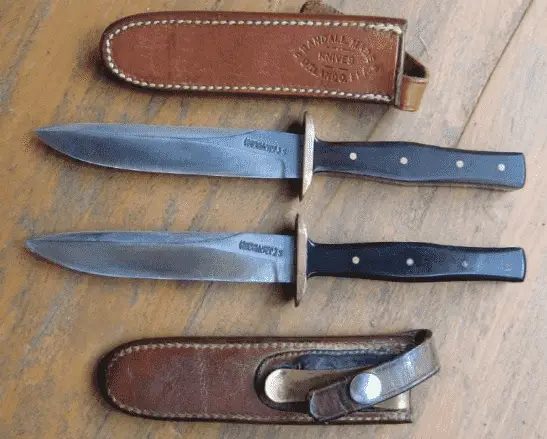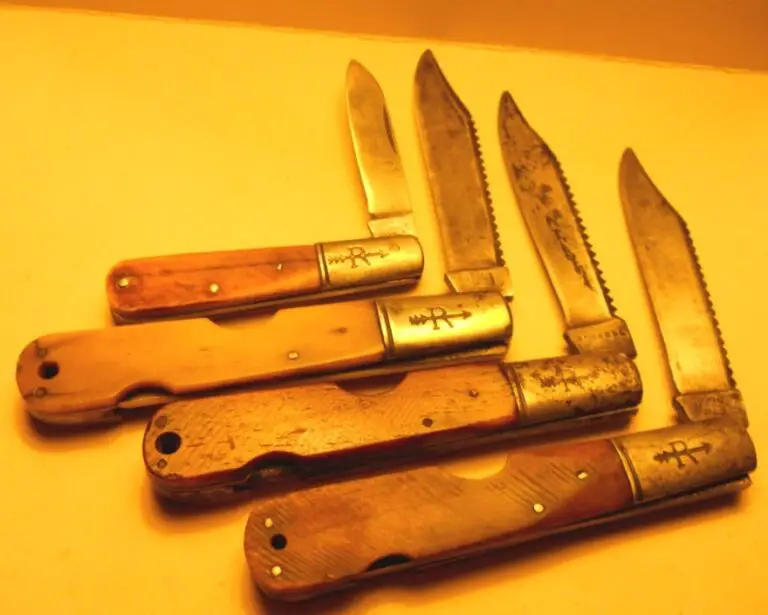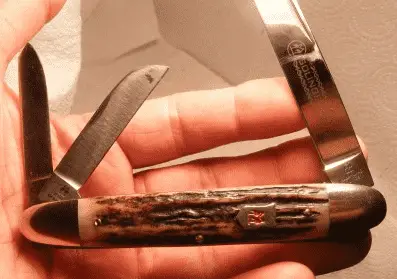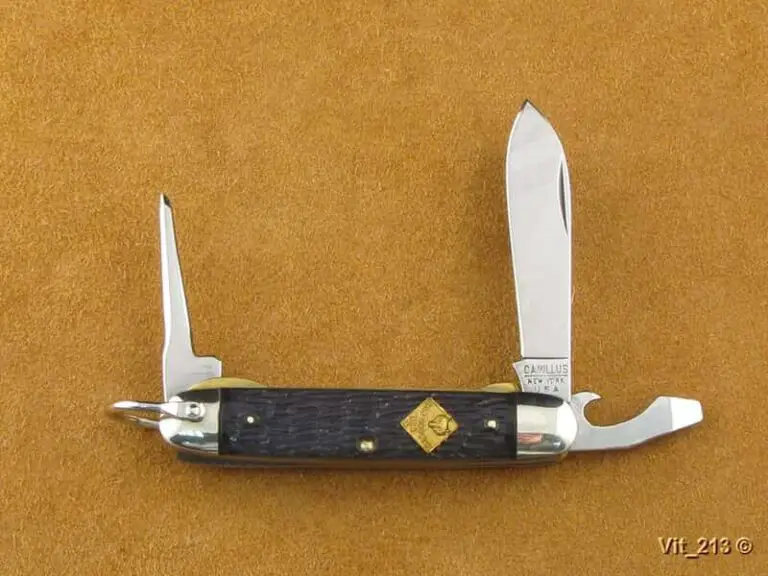The Case Kodiak is one of the most interesting exports from the company and continues to command a high price today.
It is knives like these that make some people on the outside question why Case knives are so expensive when they are just a great value for their money.
If you happen to have one of the Case Kodiak knives, this guide shows you how to tell if it is an original – and when it was made too.
How about we get into all the fun then?
Table of Contents
Brief History of The Case Kodiak
The Case Kodiak is a highly successful hunting knife series developed by the Case company.
These knives enjoyed stellar success in the market mostly because they chose to foray into the fixed blade hunting knife niche when other manufacturers were competing in the folding knife market.
Combine that with the quality steel, impeccable finish, and aesthetic appeal of these knives, and you have a winner. While Case sold a lot of Kodiak series, they started gaining a collector status around the 1970s when there was an embargo on stag material.
Being one of the major handle materials for the Kodiak knife, Case was not able to produce as much while collectors were snagging up the remaining stock of these knives that the brand has. The consensus was that since stag got scarce, these well-made knives will retain their value for long and soon become vintage, limited edition items.
That bet paid off as Case Kodiak knives have become the envy of most collectors and knife enthusiasts today.
How to Tell the Age of a Case Kodiak Knife
Follow the suggestions on this page to determine the age of your knife:
#1 Check what the box is made of
Sounds funny, but you can narrow down an era for your knife based on the box material.
For this to work, I am assuming that:
- Your Case Kodiak knife came with a box; and
- The box is of the original material, not some altered design.

If both assumptions are correct, look at the inner rest for the knife:
- Cardboard rest – Knife came before or up to 1973;
- Styrofoam rest – Knife was made/ shipped after 1973.
This is not going to tell you the exact year but it gives you an era for the knife, as I mentioned.
#2 Location of the “USA-Made” Tang stamp
Tang stamps are important in knives where the manufacturers take note to change them. For the Case Kodiak hunting knives, different tang stamps tell different stories.
You already know that the knives are made in the USA and will carry an accompanying stamp. For the Case Kodiak, this is relayed as “Hand Made in The U.S.A.”
Now, this is where it gets interesting.
If this tang stamp occurs on the backside of the knife, instead of the blade side, the knife is dated between 1967 – 1973. Otherwise, your knife is probably later than this period.
#3 Design of the general tang stamp
Besides the tang stamp above, flipping the knife shows you another one with the name of the company.
Some Case knives come with stars, others with dots, and some with a design variation. That has helped us narrow down the years of these knives over time.
For easy reference, I have attached a Case knife stamp guide for you below.

Source: Case XX
This should most likely put your knife between 1965 – 1980 which will be consistent with when these Kodiaks were churned out.
#4 Use the dot system for an exact year
Case was brilliant enough to introduce a dot-based system on the knives in the 1970s and they continued with that pattern in the 1980s. That might have made the range of things too wide to narrow what year these Case Kodiak knives came from, but this is not the case.
Since we know that the general years of the Case Kodiak knives is between 1965 – 1980, we also know that only a few (units produced in the last 10 years of that range) will have this unique marking model.
So, what Case does is put ten dots under their name tang stamp, and remove one dot for each corresponding year. Here’s what that means:
| Number of Dots | Year of Manufacture |
|---|---|
| 10 | 1970 |
| 9 | 1971 |
| 8 | 1972 |
| 7 | 1973 |
| 6 | 1974 |
| 5 | 1975 |
| 4 | 1976 |
| 3 | 1977 |
| 2 | 1978 |
| 1 | 1979 |
| 0 | 1980 |
After 1980, Case took the dotted system to the knives that they made between 1980 – 1990, but they varied the design of the company logo so that we could tell it apart. Using the information above, you can narrow the knife down to a specific year better.
PS The confusing part of the model above is that some Case Kodiak knives came between 1965 – 1970 also. Those have no dots on the tang, which is consistent with a 1980 Kodiak. Follow the other instructions on this guide to estimate a specific year if faced with such a scenario.
#5 Buy Jim Sargent’s Dating Guide
Jim Sargent created one of the most comprehensive dating guides to American knives and razors and I would advise it if you are serious about knife collecting.

Since some of the best knives to collect come from the USA, this guide will help you narrow down the years of those knives better and even establish their authenticity.
You can also get the book if you are simply a knife enthusiast based on the level of insights and information that Jim shares there.
Frequently Asked Questions
Are Case knives still made in the USA?
Case knives are sourced, manufactured, and produced in the USA. There have been some claims of there being some overseas production of these knives for a while now but there is no proof of that.
The all-American manufacturer is committed to producing high-quality folding and fixed-bladed knives in Bradford, PA. This continues a long legacy of knifemaking that spans over a century in the States.
Do Case knives use real bone?
While other manufacturers might synthesize the bone material, Case is committed to using the real thing on its knives. There is an embargo on stag handles which prevents most manufacturers from using such bone material but that has not stopped Case from using bone from other sources.
Current case knives feature cattle bone, mother of pearl, and even buffalo horn in the bone handle category. There are other non-animal sourced materials for knife enthusiasts who want to choose such options too.
Are Case knives worth the money?
Some people believe that Case knives are highly overpriced while some believe that they are a tad too expensive when compared to other brands. There are also those knife collectors, accumulators, and buyers who feel right at home with the prices on Case knives.
If you are in any of those categories, you might want to read this simple guide on why Case knives cost more than others to understand how the prices are justified.







